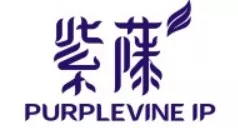- with readers working within the Accounting & Consultancy industries
Ⅴ. Retaining Original Wording in Further Limitation Amendments: Necessity and Flexibility
In patent invalidation proceedings, further limitation amendments often involve integrating technical features from other claims without altering the original wording. However, flexibility exists, allowing adjustments for clarity while preserving meaning. In the case of decision No. 59830, amendments narrowed the scope by adding technical features, raising questions about retaining the original wording. Original claims contained multiple parallel technical features, which were streamlined in amended claims for conciseness. Yet, the amendments were deemed compliant, as the original scope of protection was maintained. This illustrates the importance of assessing amendments based on substantive disclosure, not just wording differences. Ultimately, while amendments may necessitate changes in wording, preserving the original scope remains paramount. Such flexibility ensures alignment with patent examination guidelines and fosters clarity in patent enforcement procedures.
Ⅵ. The Existence of Post-Incorporation of Technical Features of Independent and Dependent Claims
After "further limitation" amendments, the original scope of protection of a claim is no longer recognized, leading to a narrowed scope. In practice, the Patent Reexamination and Invalidation Department rejects forming multiple new independent claims by adding different technical features. However, uncertainties remain regarding the existence of dependent claims post-amendment and the fate of dependent claims after incorporation into independent claims. The Supreme People's Court, in case (2021) Zhi Xing Zhong No. 548 , suggests a flexible approach to format examination, focusing on substantive compliance rather than rigid rules. Amendments to dependent claims, even if the independent claim remains unchanged, may still narrow the scope of protection. Similarly, limits on further limitation amendments lack explicit legal provisions and warrant reevaluation based on legislative intent, especially in light of Supreme Court judgments.
Ⅶ. Even if the format requirements for "further limitation" are met, it's crucial to address any potential issues of overstepping the scope of protection post-amendments.
The judgment in (2019) Zui Gao Fa Zhi Xing Zhong No. 19 holds significant legal implications for patent invalidation proceedings. It clarified the interpretation of the "further limitation" amendment, emphasizing new scope of the protection should be within the original scope of the protection of claims and specifications. By requiring amended solutions to be directly and unambiguously derived from the original claims, the court established a legal precedent that ensures the integrity of patent protection.
This ruling underscores the legal principle that amendments must not exceed the scope disclosed in the original claims and specifications, nor broaden the protection of the original patent. Such clarity in legal interpretation fosters fairness in patent invalidation proceedings while balancing efficiency in administrative examination procedures.
Moreover, the judgment emphasizes the importance of aligning procedural efficiency with the protection of patentee rights. It cautions against overly restrictive amendment criteria that could unfairly penalize patentees for drafting flaws. By prioritizing legality and reasonableness, the court ensures that procedural efficiency does not compromise the substantive or procedural rights of parties involved.
Ⅷ. Navigating Efficiency and Fairness: Evolution of Patent Examination Guidelines
The Guidelines for Patent Examination have undergone multiple revisions aimed at enhancing the efficiency of invalidation proceedings. While efficiency is paramount, considerations of substantive rights, particularly regarding the scope of protection before and after amendments, are crucial.
In practice, requesting clarification on primary combinations during oral hearings has significantly streamlined proceedings. The 2023 Guidelines introduced more flexible methods, including single-examiner review for simpler cases, further improving efficiency.
The case (2020) Zui Gao Fa Zhi Xing Zhong No. 246 highlights the importance of focusing on the substance of amendments rather than specific formal details. Amendments must adhere to Article 33 of the Patent Law and Article 73(1) of the Guidelines for Patent Examination. These provisions restrict amendments that technically comply with "further limitation" requirements but violate the first-to-file system or fail to narrow down the protection scope of claims.
Addressing public trust concerns, the Supreme People's Court ruled in (2019)Zui Gao Fa Zhi Min Zhong No. 369 illustrated that implementing amended claims without a license constitutes patent infringement. However, compensation for pre-decision infringements may be reduced due to the non-disclosure of amended claim solutions in the original patent.
Ⅸ. Conclusion
Navigating "Ffurther limitation" amendments in patent invalidation proceedings requires balancing necessity and flexibility in retaining original wording. The Supreme People's Court's rulings prioritize substantive compliance over formalities, ensuring clarity and alignment with patent examination guidelines. Uncertainties persist regarding the fate of dependent claims post-incorporation of technical features. Vigilance is crucial to prevent overstepping the scope of protection post-amendments. Efforts to enhance efficiency in proceedings, while upholding substantive rights, are evident in the evolution of the Guidelines for Patent Examination. Ultimately, clarity in legal interpretation, procedural efficiency, and fairness are vital for fostering innovation and maintaining public trust.
The content of this article is intended to provide a general guide to the subject matter. Specialist advice should be sought about your specific circumstances.


